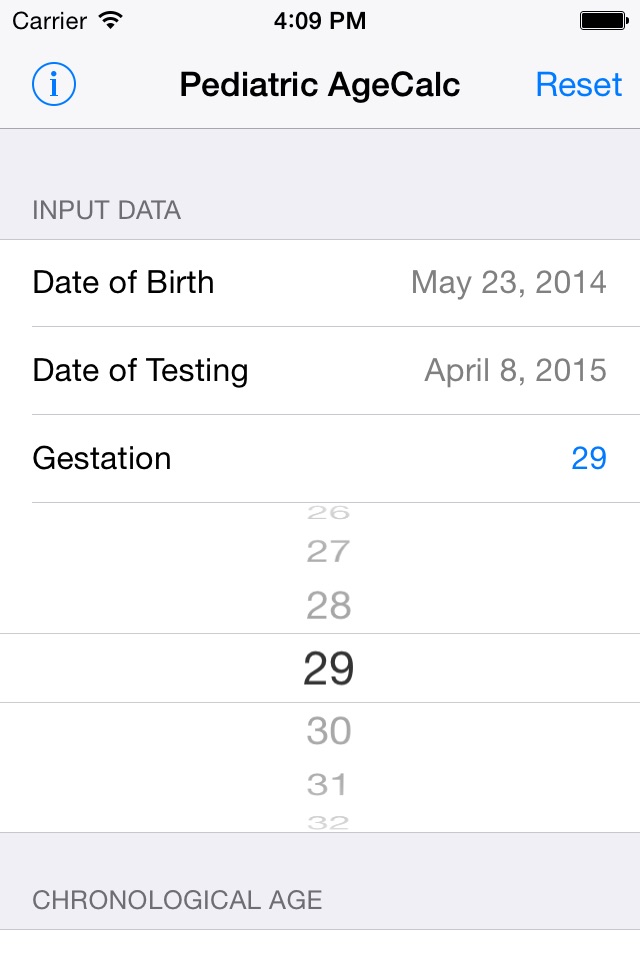
Pediatric Age Calc is a tool that parents and professionals can use to calculate the chronologic and adjusted age of children. Pediatric Age Calc calculates age using the standard protocol used by psychologists and educators as recommended in childhood assessment manuals; it assumes 30 days in a month and 12 months in a year, it does not use actual calendar days.
A child’s chronologic age is the child’s actual age since birth. If a child was born prematurely (less than 37 weeks gestation), consideration should be given to using the child’s adjusted age for tracking growth and development. A child’s adjusted age is calculated by subtracting the child’s degree of prematurity (number of weeks born early) from the child’s chronologic age.
Adjusting Age for Growth
Whether or not to use a childs adjusted age for growth, depends on the childs birth weight. If a child was born weighing greater than 2,500 grams, the childs growth should be plotted at the childs chronologic age on the WHO (World Health Organization) growth chart from birth to two years of age and then on the CDC (Center of Disease Control) growth charts. If a child was born weighing 1,500 to 2,500 grams, the childs growth can be plotted on the same growth charts but at the childs adjusted age until 3 years of age. If a child was born weighing less than 1,500 grams, the childs growth should be plotted on special VLBW (very low birth weight) growth charts at the childs adjusted age until 3 years of age.
Adjusting Age for Development
If a child was born at less than 37 weeks gestation, the child’s adjusted age should be considered when evaluating a child’s development until the child’s adjusted age is at least 12 months. While the literature is not conclusive regarding the best time to stop adjusting for infants born prematurely, rationale for adjusting to one year adjusted age include: (1) babies born prematurely differ from full-term babies physically, as such it is essential to use adjusted age when looking at issues related to feeding and sleep; (2) babies born prematurely differ from full-term babies developmentally, as such it is important to consider the child’s adjusted age when looking at developmental milestones; (3) the earlier a child is born, the longer the child needs to ‘catch-up’, hence the adjusted age of one year versus a chronological age of one year; and (4) using an adjusted age beyond the adjusted age of 12 months may result in a child not being referred for further evaluation and early intervention services at an early enough age. Most programs have guidelines regarding the use of adjusted age for infants and toddlers born prematurely, you should use the policy of your program.



